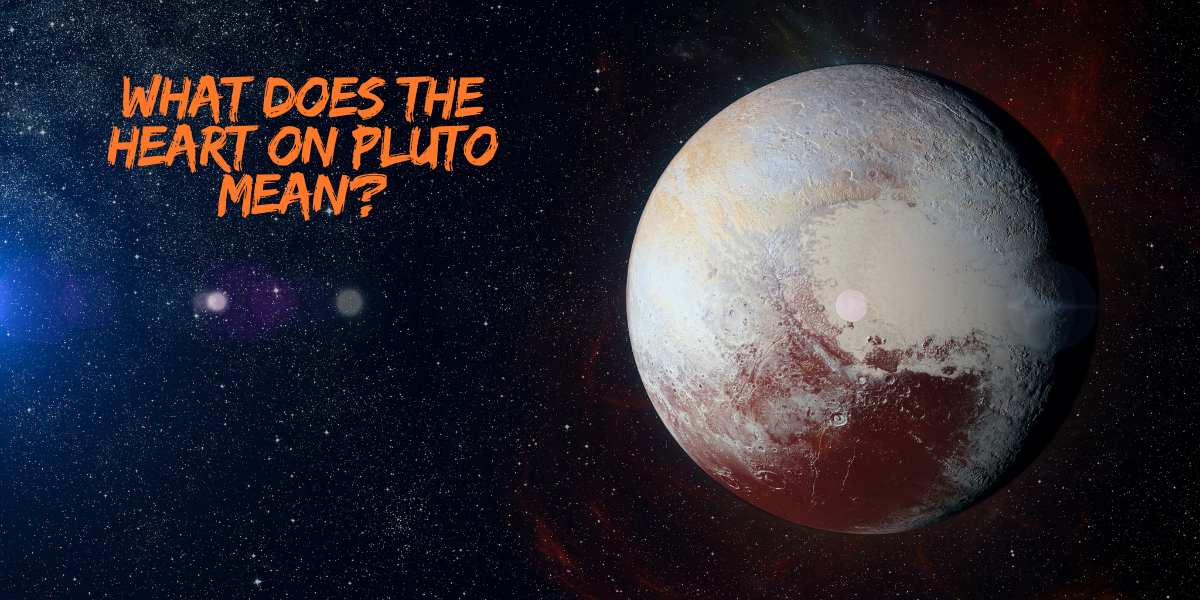Have you ever seen a picture of Pluto and noticed a big, bright heart shape on its surface? This heart is one of the most famous features of Pluto, but what is it really? Is it just a funny shape, or does it mean something special?
Pluto is a small, icy world at the edge of our solar system. Even though it’s far away, scientists have studied it closely. The heart-shaped region, called “Tombaugh Regio”, is named after Clyde Tombaugh, the man who discovered Pluto in 1930. But why does this heart exist? What makes it so unique?
Could this heart hold secrets about Pluto’s past? Let’s find out!
Why Does Pluto Have a Heart-Shaped Feature?
The heart on Pluto is not just a random shape, it’s a real geological feature! When NASA’s New Horizons spacecraft flew by Pluto in 2015, it took amazing pictures of this heart. Scientists discovered that it’s made of nitrogen ice, which gives it a bright, smooth look.
But how did this heart form? The left side (the brighter half) is a giant glacier called Sputnik Planitia. This icy plain sits in a deep basin, possibly created by a huge impact long ago. Over time, nitrogen ice filled the basin, creating the heart’s smooth surface.
Fun Fact: The heart is about 1,000 miles (1,600 km) wide, bigger than the state of Texas!
Is the Heart on Pluto Made of Ice?
Yes! The heart is mostly made of frozen nitrogen, along with some methane and carbon monoxide. These ices are much softer than water ice, so they can flow like glaciers on Earth.
The nitrogen ice moves very slowly, shaping the surface over millions of years. This movement creates cracks, hills, and even floating mountains of water ice!
Why nitrogen? Pluto is so cold (-375°F or -225°C) that gases like nitrogen freeze solid. The heart acts like a giant ice cap, similar to Earth’s polar ice but much colder!
Does Pluto’s Heart Affect Its Weather?
Believe it or not, Pluto has weather, and the heart plays a big role! The nitrogen ice evaporates slightly during the day, creating a thin atmosphere. At night, it freezes back onto the surface.
This cycle creates winds that blow across Pluto, shaping its surface. The heart’s smooth ice reflects sunlight, keeping the area colder than the darker regions around it.
Fun Fact: Pluto’s atmosphere is so thin that if you stood on it, you wouldn’t feel wind like on Earth, but it still changes the landscape!
Why Is One Side of the Heart Brighter Than the Other?
The heart is split into two parts:
- The left side (Sputnik Planitia): Bright, smooth, and covered in nitrogen ice.
- The right side: Darker, with more cracks and mountains.
Scientists think the left side is brighter because fresh nitrogen ice keeps refreezing there. The right side has older ice mixed with dark material, making it look different.
Comparison: It’s like a half-melted ice cream scoop, one side is smooth, and the other is rough!
Could Pluto’s Heart Hide an Underground Ocean?
Some scientists think Pluto might have a hidden ocean beneath its icy crust. The heart sits in a deep basin, and its weight could be pulling Pluto’s crust down. If an ocean exists, it would be buried deep under the ice, kept liquid by heat from radioactive rocks.
Why does this matter? If Pluto has liquid water, it could mean other icy worlds in space might have oceans too, and maybe even life!
Will Pluto’s Heart Disappear One Day?
The heart won’t vanish anytime soon, but it does change. Pluto’s seasons last for Earth centuries, so the ice shifts slowly over time. In thousands of years, the heart might look different as nitrogen moves to other parts of Pluto.
Fun Fact: Pluto’s orbit is so long that one year there equals 248 Earth years!
What Makes Pluto’s Heart So Special?
Pluto’s heart is more than just a pretty shape, it’s a frozen world of moving ice, hidden oceans, and strange weather. This giant heart teaches us how even small, distant worlds can be full of surprises.
What other secrets do you think Pluto is hiding? Could there be more hearts on other planets? Let us know what you think!
📌 Frequently Asked Questions
Why is Pluto no longer a planet?
Pluto was reclassified as a dwarf planet in 2006 because it doesn’t “clear its orbit” like the eight major planets. It shares its space with other icy objects in the Kuiper Belt.
How big is Pluto compared to Earth?
Pluto is much smaller, only about 1/6 the width of Earth. You could fit Pluto inside the United States!
How long does it take to reach Pluto?
NASA’s New Horizons took 9.5 years to reach Pluto. It flew by in 2015, giving us the first close-up pictures.
What color is Pluto really?
Pluto is mostly light brown and reddish due to tholins (organic compounds) on its surface. The heart is whiter because of ice.
Does Pluto have any moons?
Yes! Pluto has five moons. The largest, Charon, is so big that Pluto and Charon orbit each other like a double planet.
Can humans ever live on Pluto?
No, Pluto is too cold and has no breathable air. The temperature is -375°F (-225°C), and the atmosphere is very thin.
What is the Kuiper Belt?
The Kuiper Belt is a ring of icy objects beyond Neptune. Pluto is one of the largest objects in this region.
Has any spacecraft landed on Pluto?
No spacecraft has landed on Pluto yet. New Horizons only flew by, but it gave us amazing photos and data.
Why is Pluto’s heart called Tombaugh Regio?
It’s named after Clyde Tombaugh, the astronomer who discovered Pluto in 1930. “Regio” means region in Latin.
Could there be life on Pluto?
It’s very unlikely because Pluto is too cold. However, if an underground ocean exists, tiny microbes might survive, but we don’t know yet!
